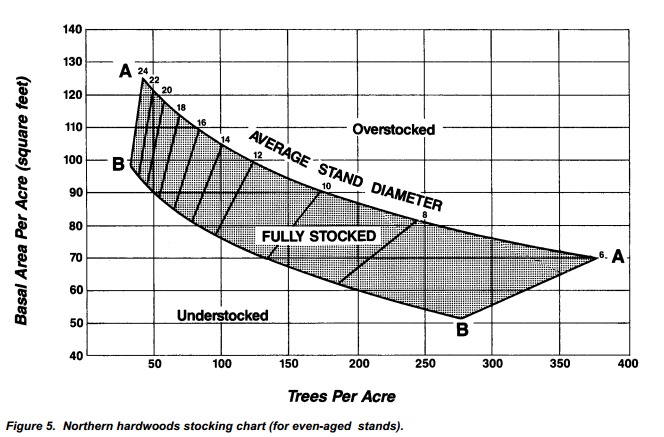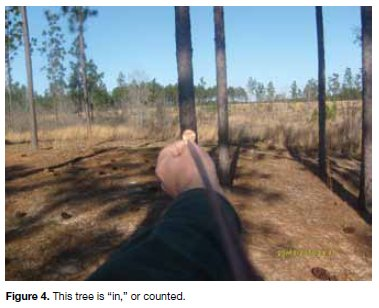This post is the third in a series about watching your trees grow over time. In our first post, we talked about how to identify trees . In the second post, we talked about measuring individual trees , including diameter, height and site index. It’s time to look at your woods as a whole, by putting all those pieces together. What can you learn from all those individual trees?
The first concept I want to talk about is succession, or the change from one forest type to another. From time to time, we hear from landowners about various wildlife, that they used to see or hunt on their property, that aren’t there anymore. Although there are a number of things this could be attributed to, one of them is the composition of trees that make up your woods.Take a look at the biggest, tallest trees on your property, what types of trees are those? Then, look at the younger trees, especially those that are as tall as you or shorter. What types of trees are they? A forest goes through changes in trees over time, depending on how much sunlight is hitting the dirt below your feet. If the tallest and smallest trees are the same types, your woods has reached a steady state (or climax forest). However, if the smaller trees are a different type of trees than the biggest trees, your forest is still in flux moving from more sun-loving trees to those that grow better in shade (this is succession). For example, maybe you have large aspen trees, but all the small trees are white pine and red oak. This means that eventually your forest will convert to all white pine and red oak. If you hunt grouse on your property, a change to pine and oak won’t be the right habitat anymore… thus is it important to watch how your trees change over time.
The next concept is stocking , or a measure of how crowded your trees are. In many of our previous posts, we’ve talked about a woods being too crowded, but how do you know what too crowded looks like? This concept refers to whether a certain area of land (an acre) has the capacity (sun, nutrients, water) to support the number of living trees there. For this to work, you need to know three things about your woods. The first is what types of trees you have. This is important because an acre of land suitable for jack pine can support more trees per acre than land suitable for northern hardwoods. The next thing you need to know is the number of trees you have per acre. No, you do not have to count every tree in an acre. To measure this, you select a random spot in a stand of trees, and count every tree that falls within 26’4″ of that spot. That represents 1/20th of an acre. If you count 11 trees in that circle, you multiply 11 by 20, and get 220 trees per acre.
The final part of the stocking equation is called basal area. This is a rather complicated concept, so if you want to read more, check out this publication . To measure it is much simpler than the idea itself. Stand at the spot that you used for the center of your circle (above), and hold a penny 25 inches from your eye (about arm’s length). Yes, the penny part is important. Move in a circle (360 degrees), and count every tree that is wider than the penny. (If there are trees that are exactly as wide as the penny, count every other one.) Let’s say you count 10 trees wider than the penny, you multiply this by 10 (again, penny is important as it is why you multiply by 10), and this gives you a basal area of 100. Now you know the forest type, the trees per acre, and the basal area. Looking at the chart below, using our numbers of 220 trees/acre and basal area of 100, you see our woods are too crowded (or overstocked), and are not supporting healthy tree growth. It may be time to cut firewood or harvest timber.


By now, you are getting a good picture of your woods. If you haven’t, it might be a good time to start a journal or binder with all the information you are collecting. When it comes time to meet with a forester, you will have lots of valuable information. If you want to share this information, along with photos, maps, and goals, with other family members, check out My Land Plan as an electronic option.
